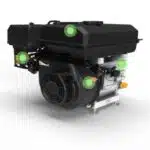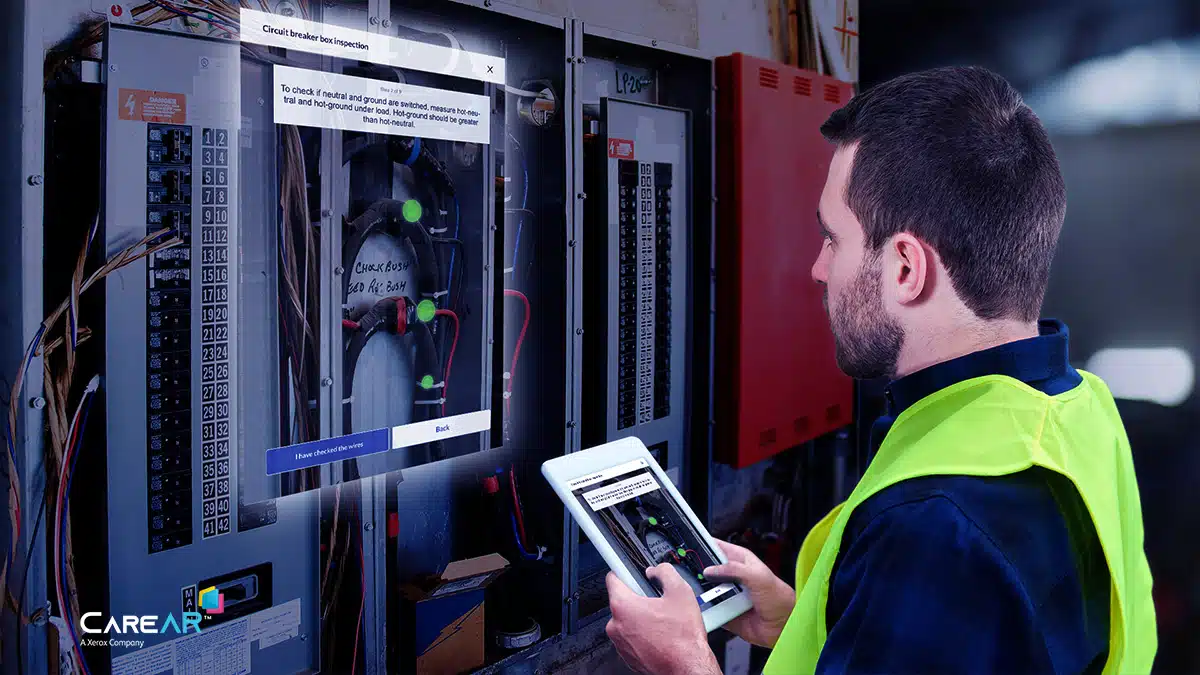When it comes to integrating new technology into the workflow of field technicians, the journey often begins with addressing change management and fostering technology acceptance. In a landscape where almost 50% of global software projects fail, software adoption becomes a pivotal factor, especially for SaaS companies.
Augmented Reality (AR) and Artificial Intelligence (AI) are no exceptions to this rule. The adoption of these cutting-edge technologies among field technicians is influenced by several factors. To facilitate a smoother transition and enhance technology acceptance, it’s crucial to approach the adoption of AR and AI in phases, gradually progressing from familiarizing workers with digital tools to introducing immersive experiences.
Here, we outline a comprehensive approach for boosting technology acceptance and fostering the adoption of Augmented Reality and AI among field technicians:
Phase 1: Digitalize 2D Content and Establish Workflows
The initial step in this journey is to emphasize the usefulness and ease of use of new technology, as outlined by the Technology Acceptance Model. Consistent and informative communication through an educational setting is key. By clearly demonstrating the benefits of AR and AI tools and simplifying their features, workers can better understand how these technologies can enhance their tasks and productivity.
Training sessions should be designed, avoiding technical jargon and catering to the target audience. Since 65% of people are visual learners, integrating visual aids like infographics, videos, and photos can significantly aid in comprehension and engagement; you set the foundation for smoother adoption by catering to diverse learning styles.
Phase 2: Leverage Remote Assistance for Enhanced Support

Once the workforce is acclimated to the digital tools, integrating remote visual assistance capabilities can further demonstrate the power of AR and AI. This phase enables technicians to receive real-time guidance and support from experts, no matter where they are located. This interactive collaboration not only improves problem-solving but also reinforces the idea that these technologies are practical and valuable for their tasks.
Phase 3: Transition to Immersive 3D Content and Digital Twins
 With a solid foundation established, the next step is to gradually introduce immersive 3D content and digital twins. These advanced features can provide a deeper understanding of equipment and environments, enabling field technicians to make more informed decisions. By this stage, the team has gained confidence in using the technology, making it easier to embrace more sophisticated applications.
With a solid foundation established, the next step is to gradually introduce immersive 3D content and digital twins. These advanced features can provide a deeper understanding of equipment and environments, enabling field technicians to make more informed decisions. By this stage, the team has gained confidence in using the technology, making it easier to embrace more sophisticated applications.
Phase 4: Harness the Power of Champions and Demonstrations
An influential strategy for overcoming resistance to new technology is to identify and utilize internal champions who can advocate for the adoption of AR and AI. These respected individuals can help sway opinions, address concerns, and encourage their peers to embrace the change.
Prior to the official rollout, multiple demonstration sessions can be conducted to involve the team. This gradual engagement not only builds excitement but also provides a hands-on experience, allowing technicians to see firsthand how these tools can simplify their tasks and enhance their overall workflow.
Phase 5: Cultivate a Supportive Environment
Fear of failure is a common barrier to technology adoption. To mitigate this fear, leaders should create a supportive environment where experimentation and learning are encouraged. Workers should feel safe to explore and learn at their own pace, without the worry of embarrassment. Recognizing and celebrating successes, no matter how small, can contribute to building confidence and reduce apprehensions.
In conclusion, the process of integrating Augmented Reality and AI technology among field technicians requires a systematic and phased approach. By initially digitalizing 2D content, utilizing remote assistance, transitioning to immersive 3D experiences, and leveraging internal champions, you can successfully improve technology acceptance and adoption. By addressing change management challenges head-on and empowering your workforce, you pave the way for a more efficient, productive, and technologically advanced future.
